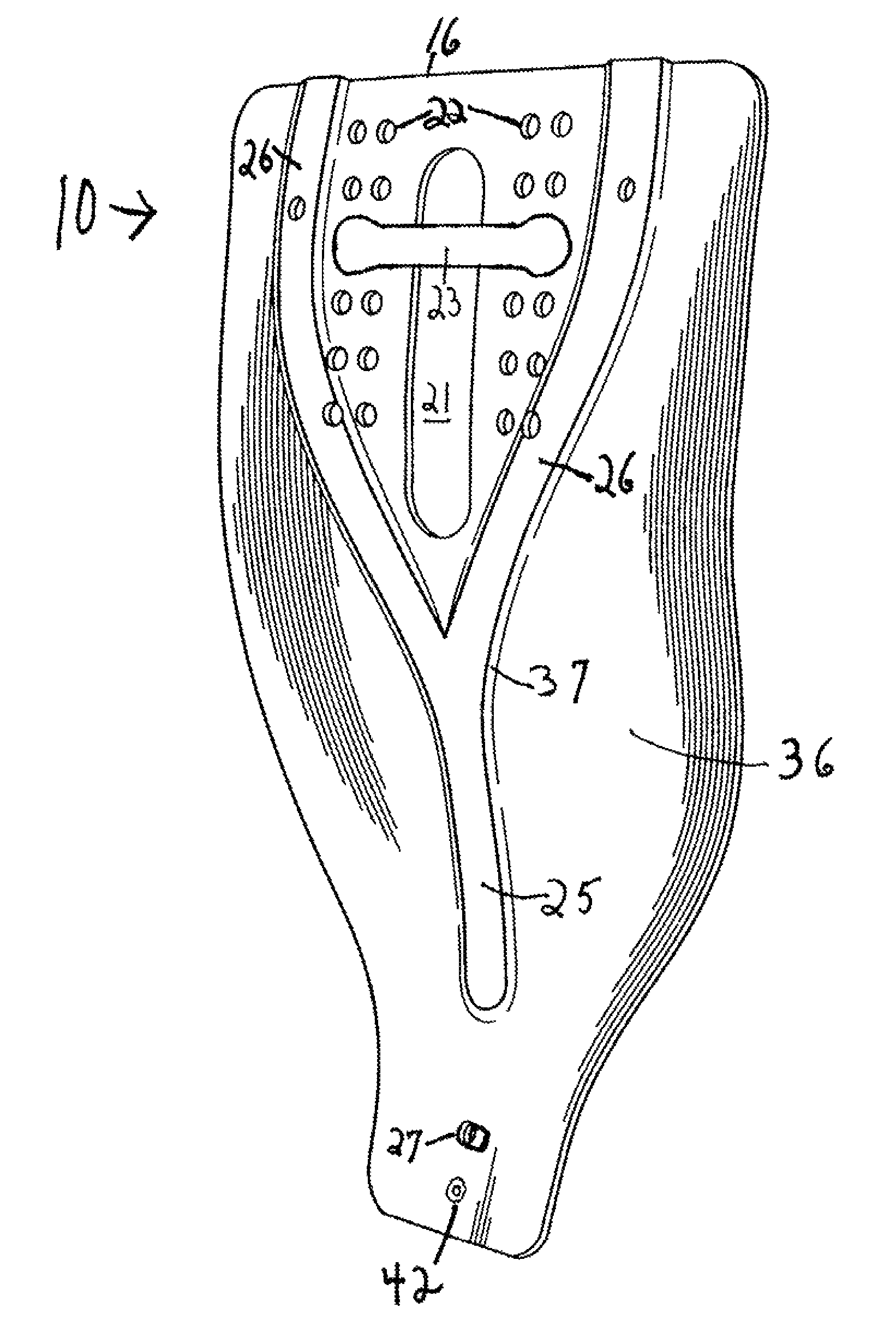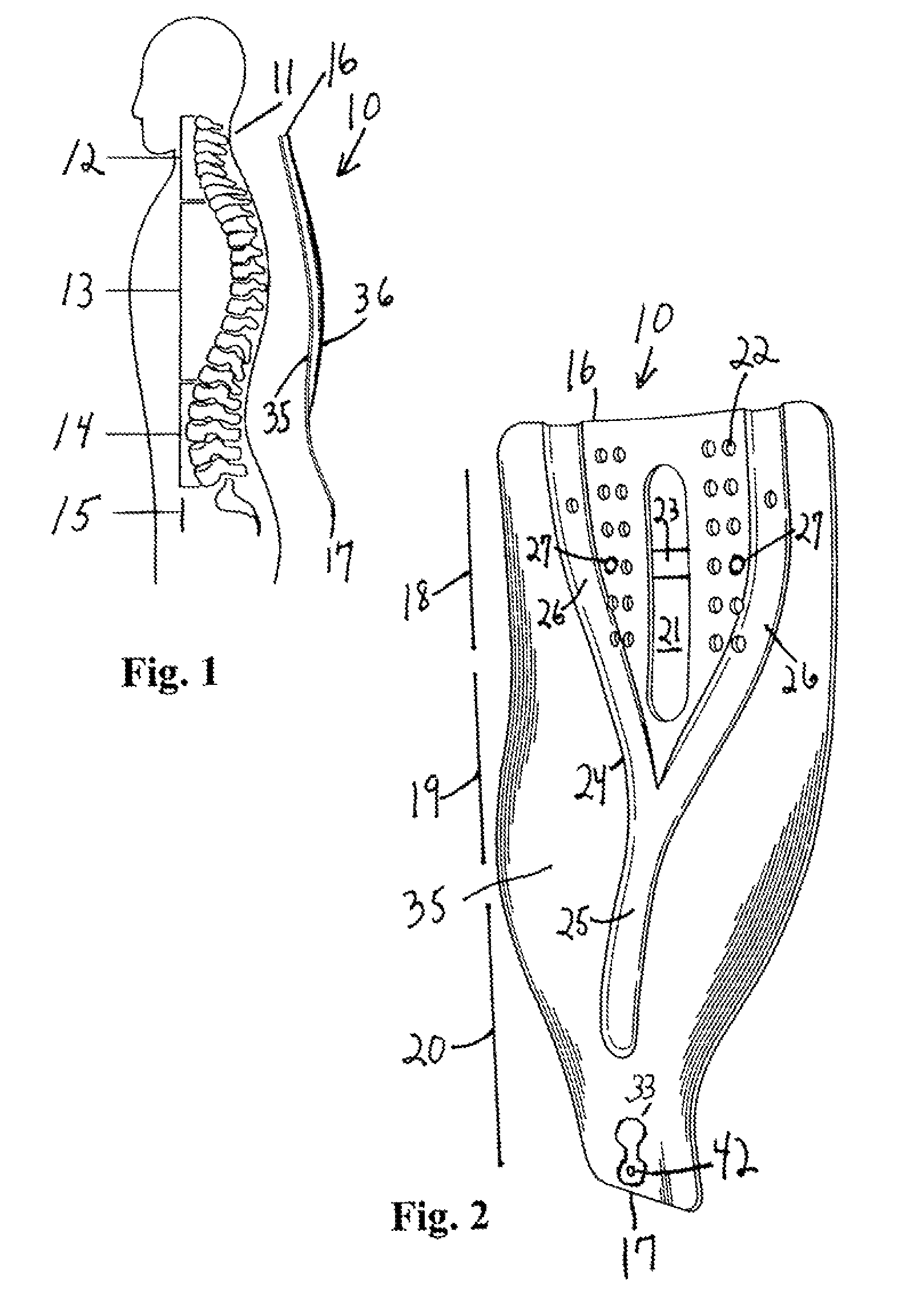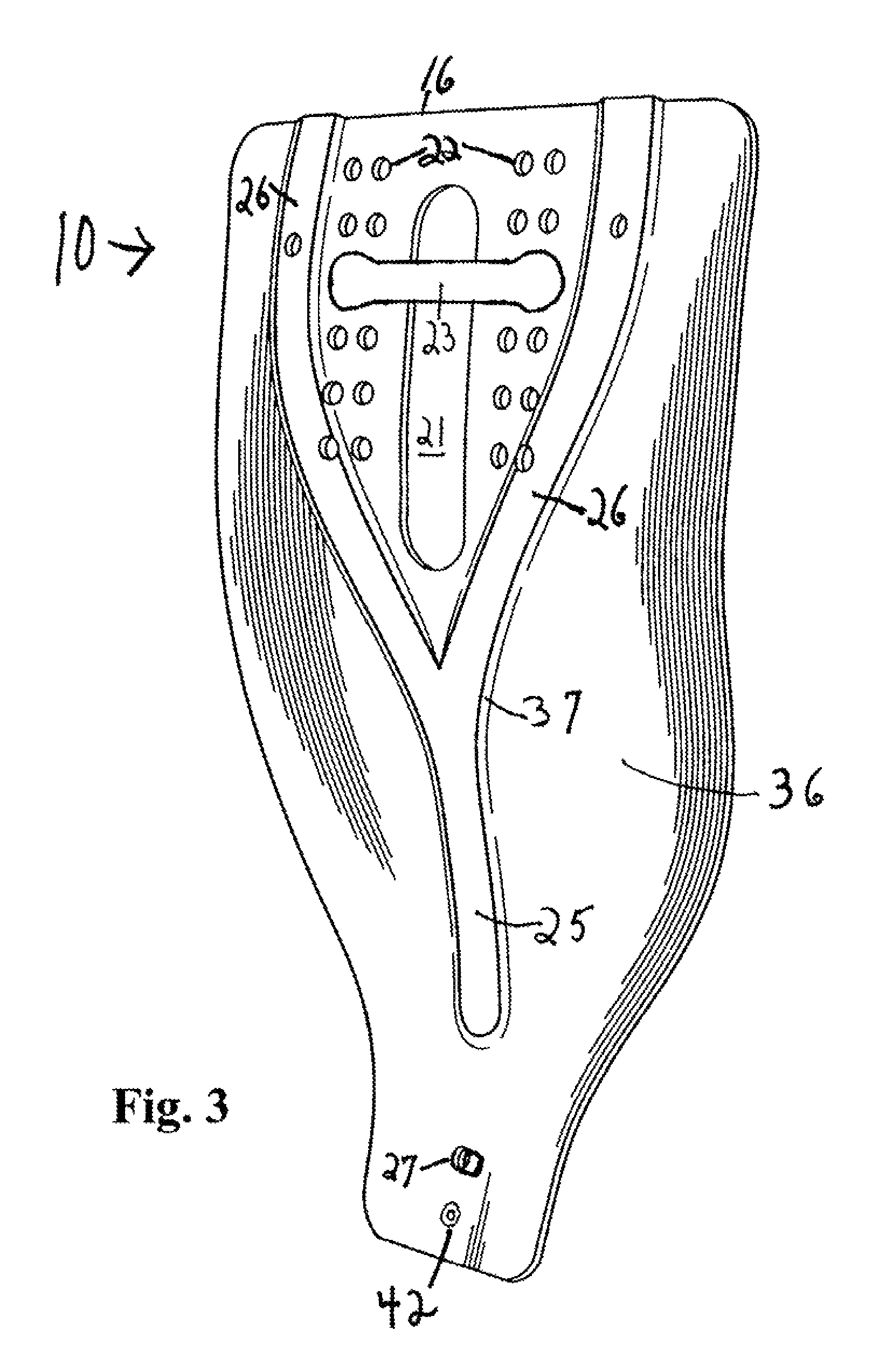Backpack back support frame
a back support frame and backpack technology, applied in the field of backpack back support frame, can solve the problems of easy deformation of the support frame, lack of good support by the internal frame, and increase the deformation of the support stick, so as to improve the oxygenation of the muscles, reduce muscle fatigue, and improve comfort
- Summary
- Abstract
- Description
- Claims
- Application Information
AI Technical Summary
Benefits of technology
Problems solved by technology
Method used
Image
Examples
Embodiment Construction
[0022]The present invention is a back support frame for a backpack. It fits within a pocket or sleeve on the back of a backpack, and shoulder straps and a belt attach directly to the support frame. FIG. 1 shows a side view of the support frame 10 which is curved horizontally and vertically to conform to the shape of the spinal column 11 and the back of a user. Support frame 10 has a top end 16 and a bottom end 17, and it extends in length from the top of the spinal column 11 (cervical portion 12) to the bottom of the spinal column 11 (sacral 15 portion). Thus, the support frame 11 provides support to the thoracic 13, lumbar 14, and sacral 15 portions of the spinal column 11.
[0023]FIG. 2 shows a front perspective view of the support frame 10 wherein the top end 16 is greater in horizontal length than the bottom end 17 so that support frame 10 has a Y-shaped configuration. Support frame 10 has an upper region 18, a middle region 19, and a lower region 20. Lower region 20 has the great...
PUM
 Login to View More
Login to View More Abstract
Description
Claims
Application Information
 Login to View More
Login to View More - R&D
- Intellectual Property
- Life Sciences
- Materials
- Tech Scout
- Unparalleled Data Quality
- Higher Quality Content
- 60% Fewer Hallucinations
Browse by: Latest US Patents, China's latest patents, Technical Efficacy Thesaurus, Application Domain, Technology Topic, Popular Technical Reports.
© 2025 PatSnap. All rights reserved.Legal|Privacy policy|Modern Slavery Act Transparency Statement|Sitemap|About US| Contact US: help@patsnap.com



